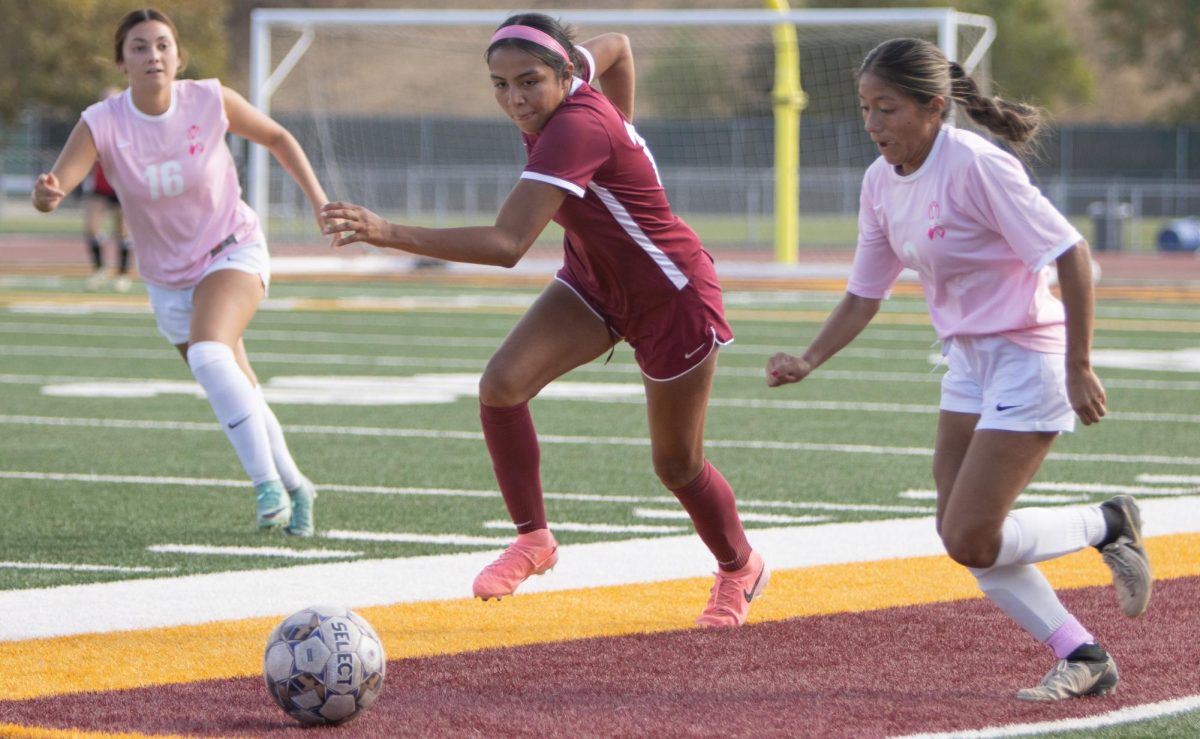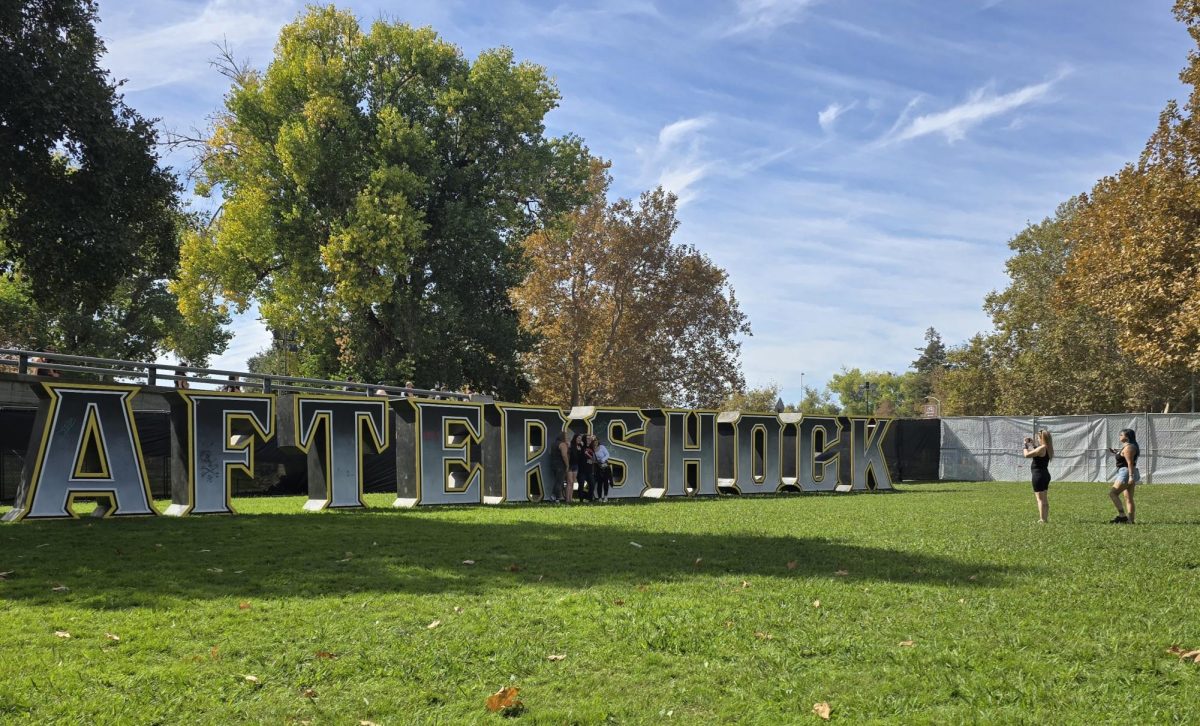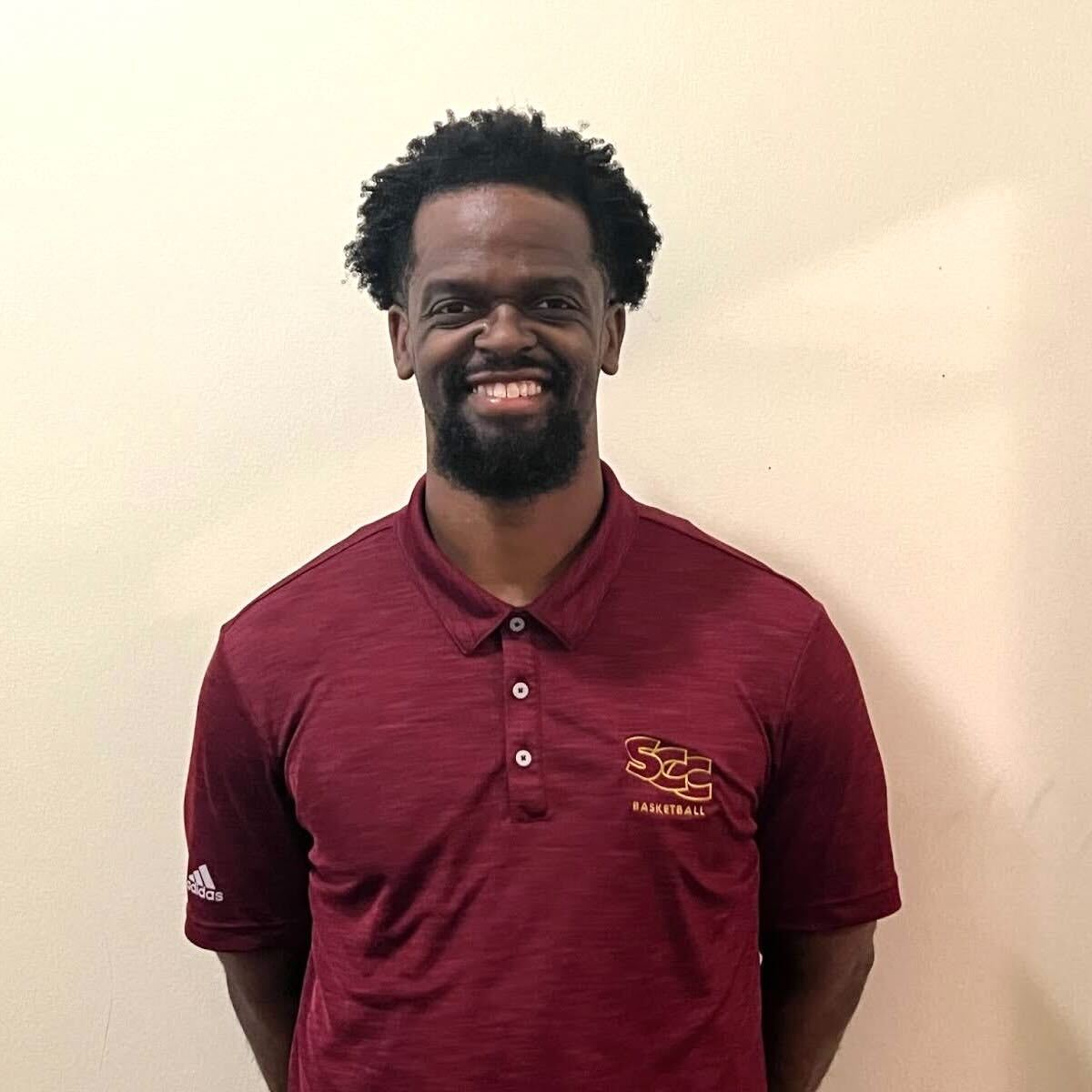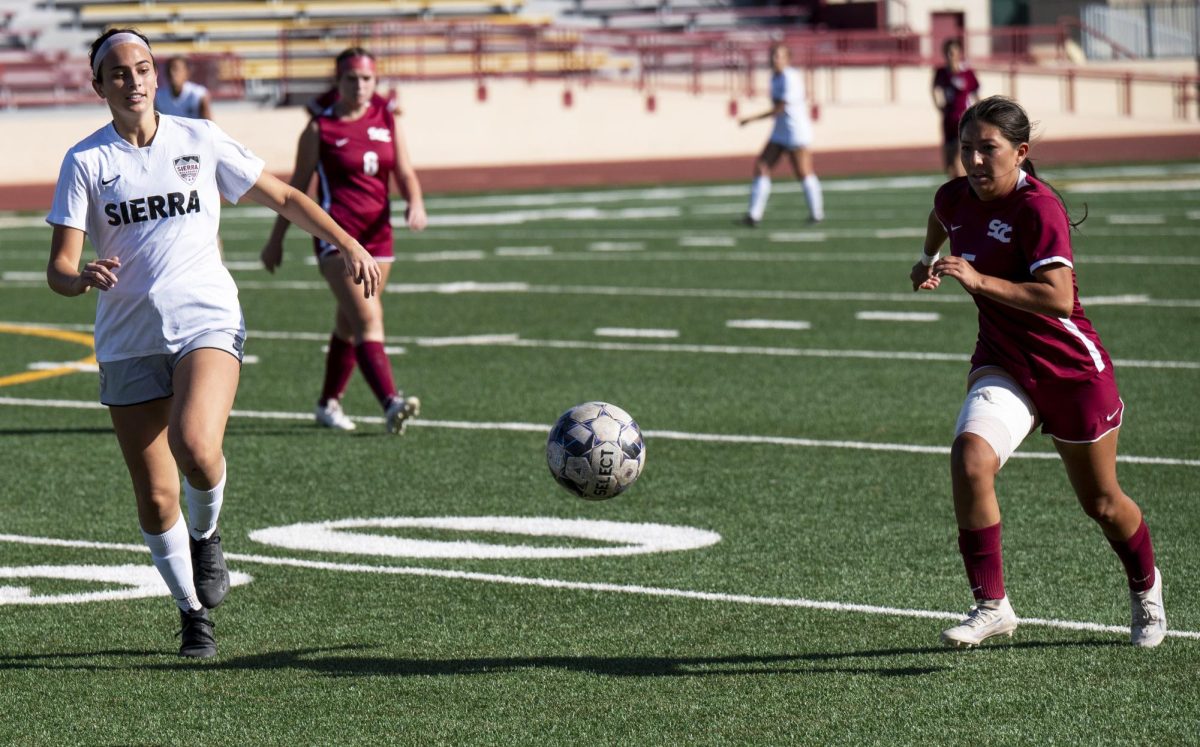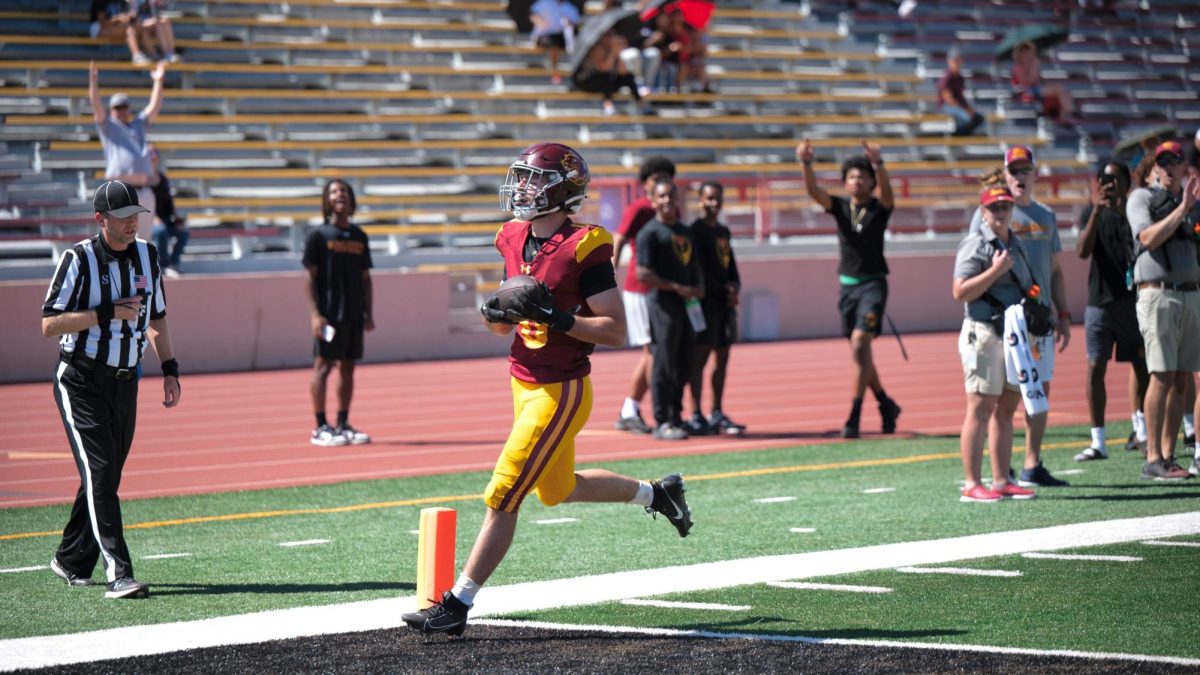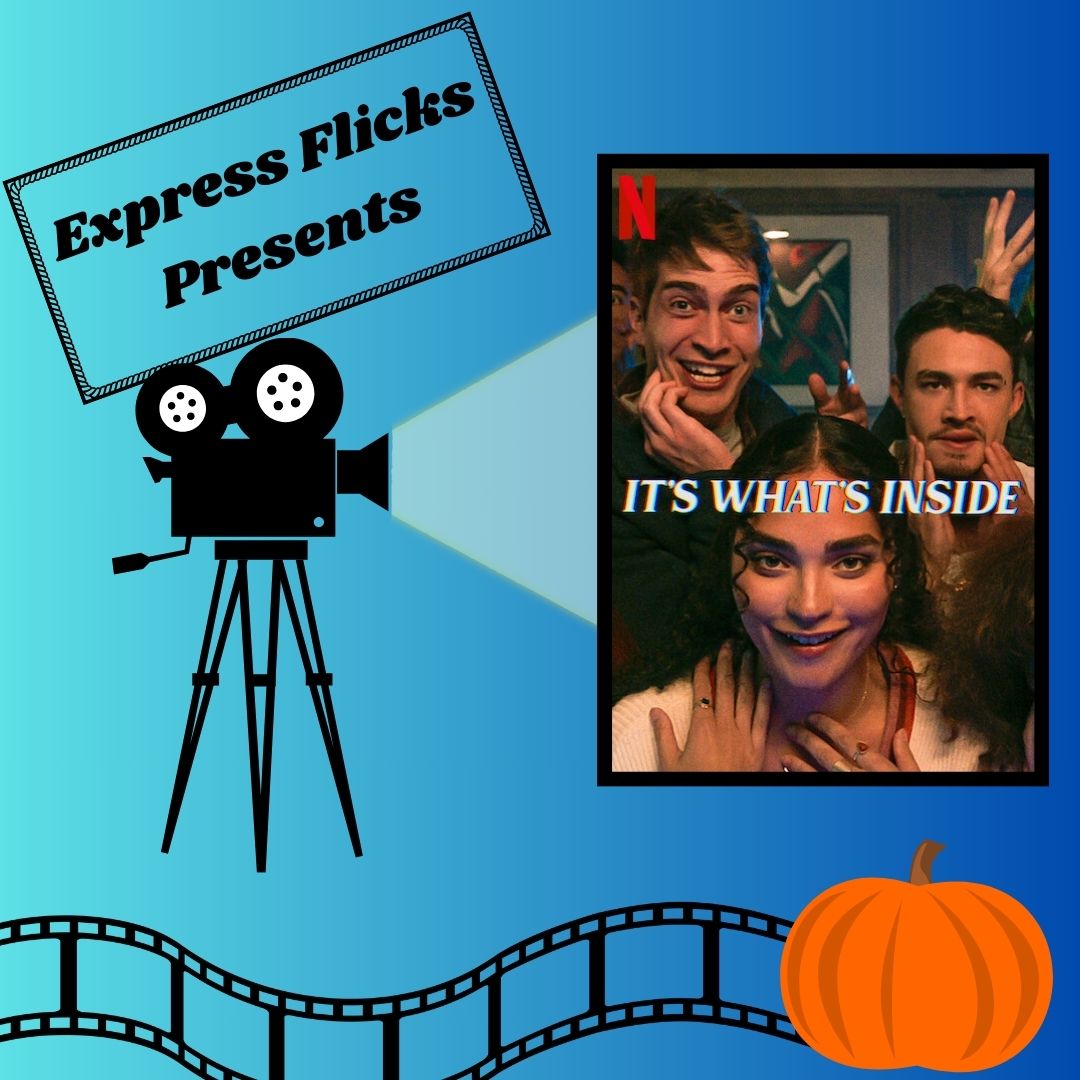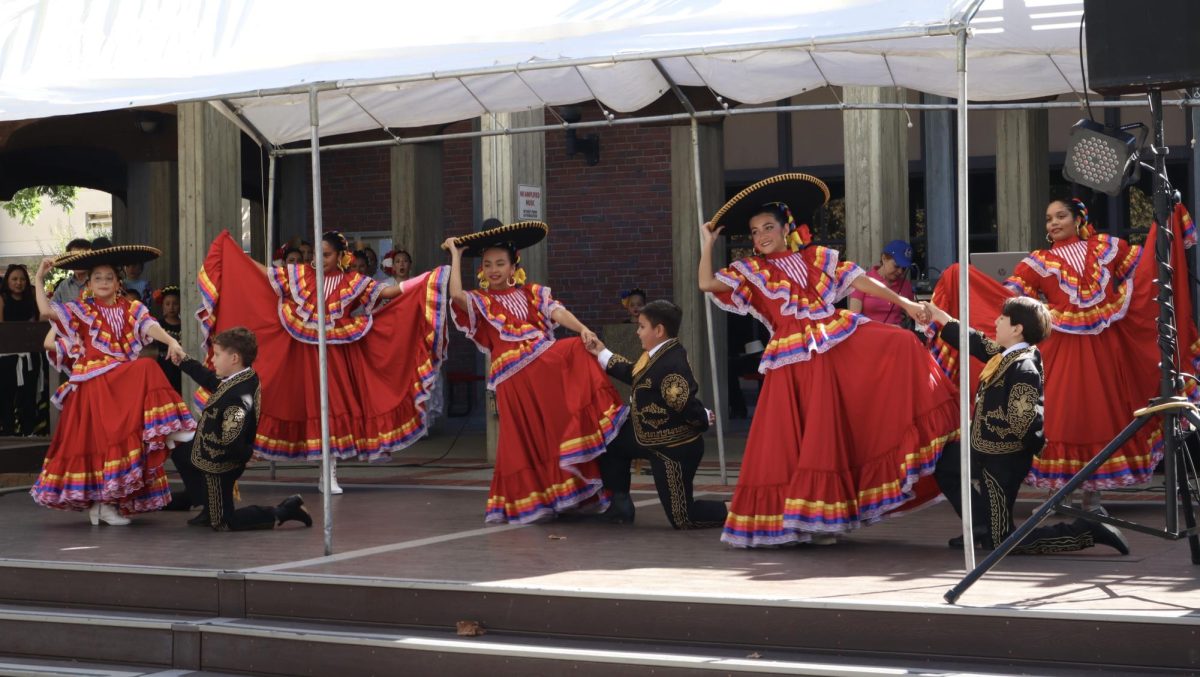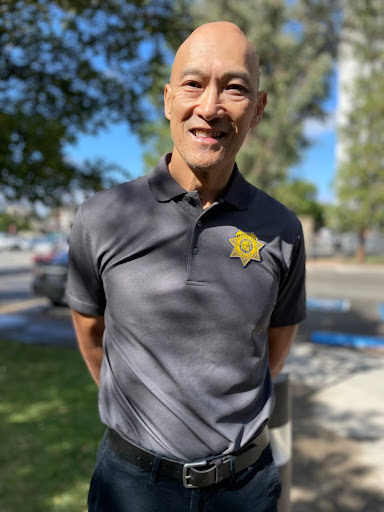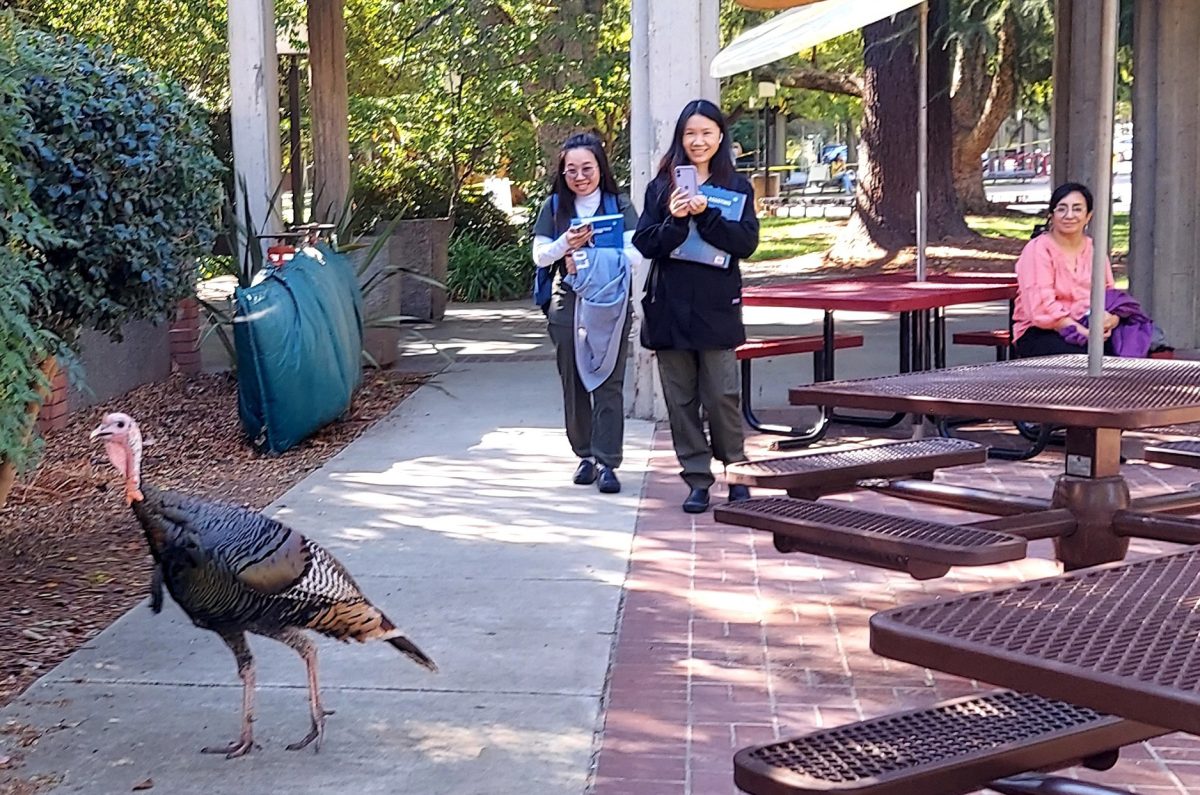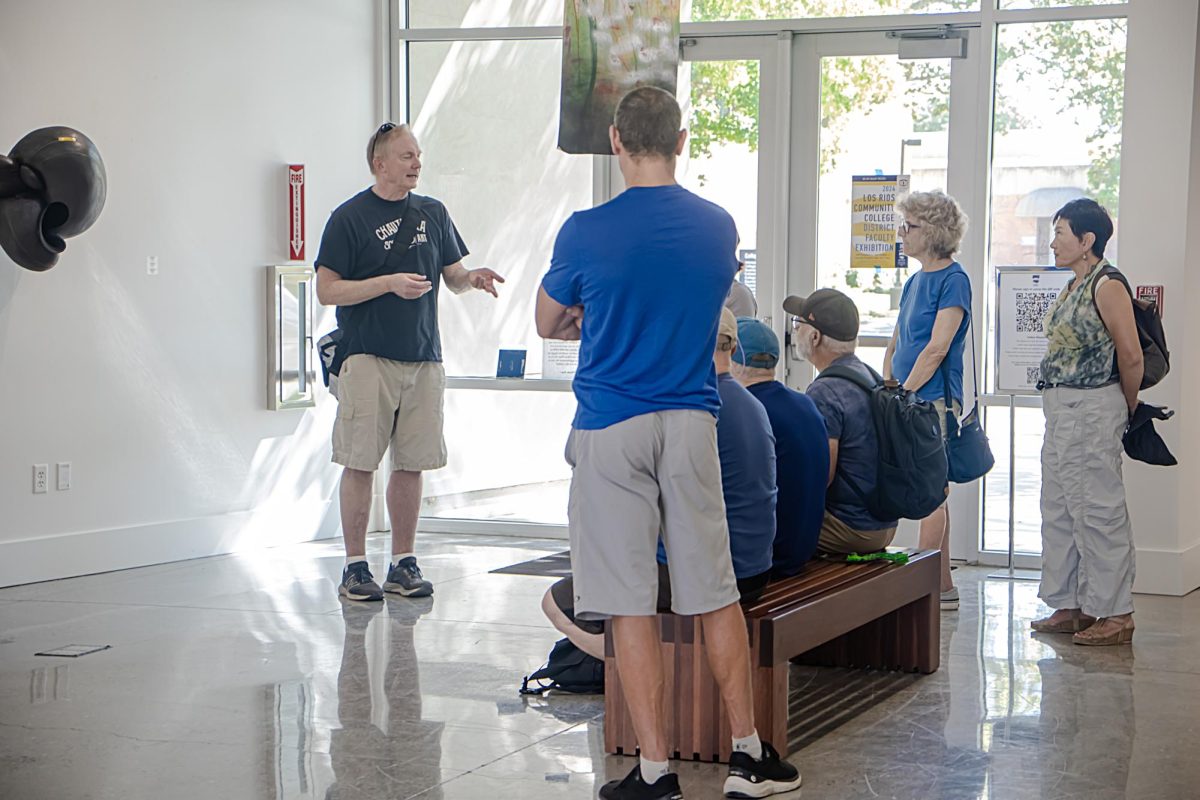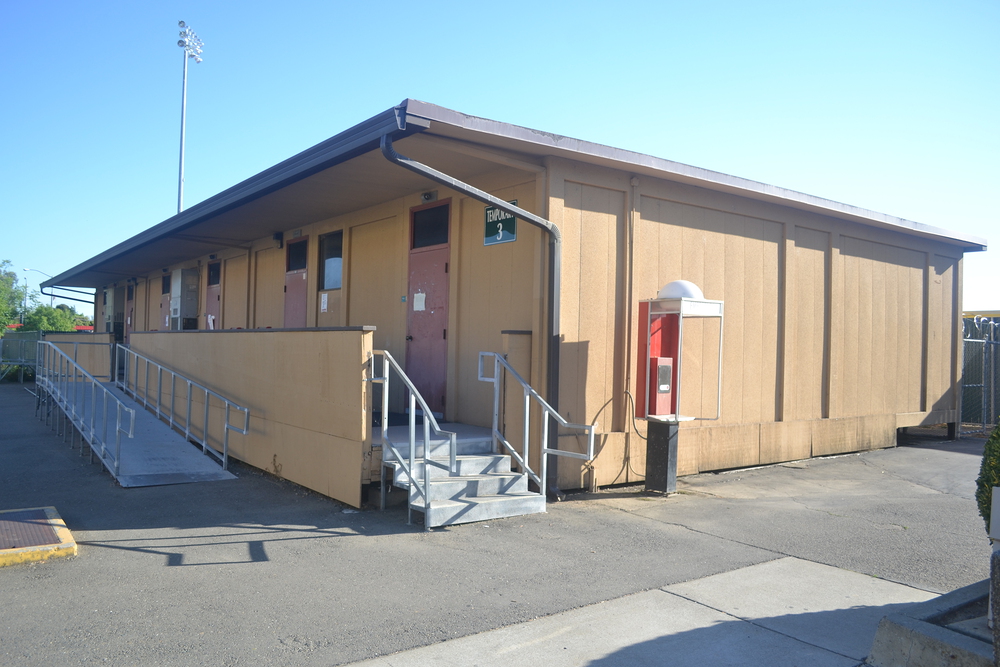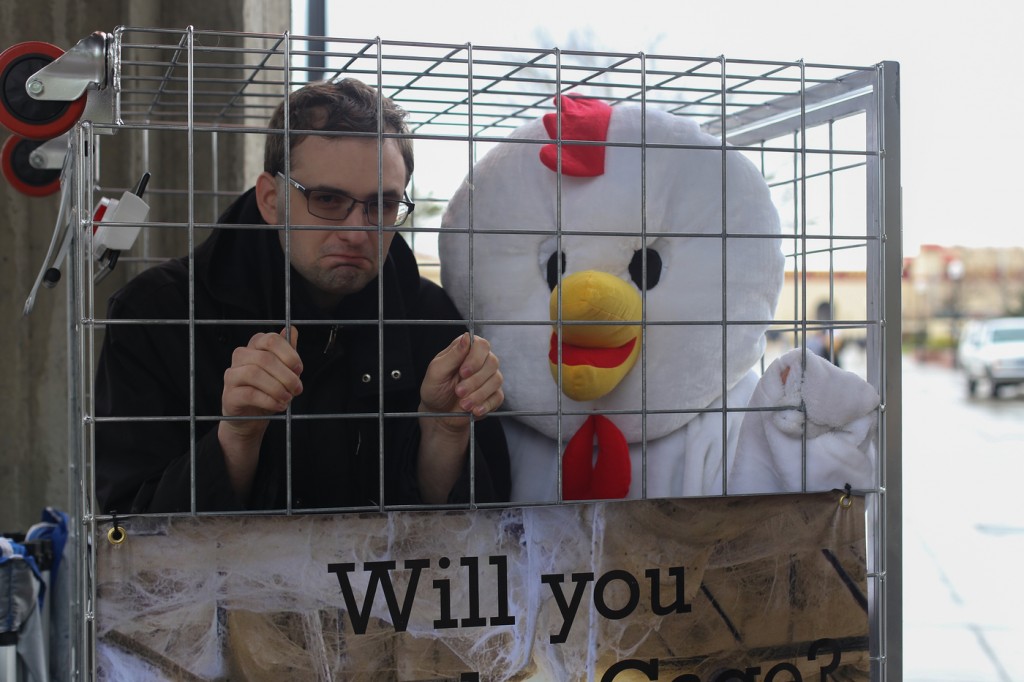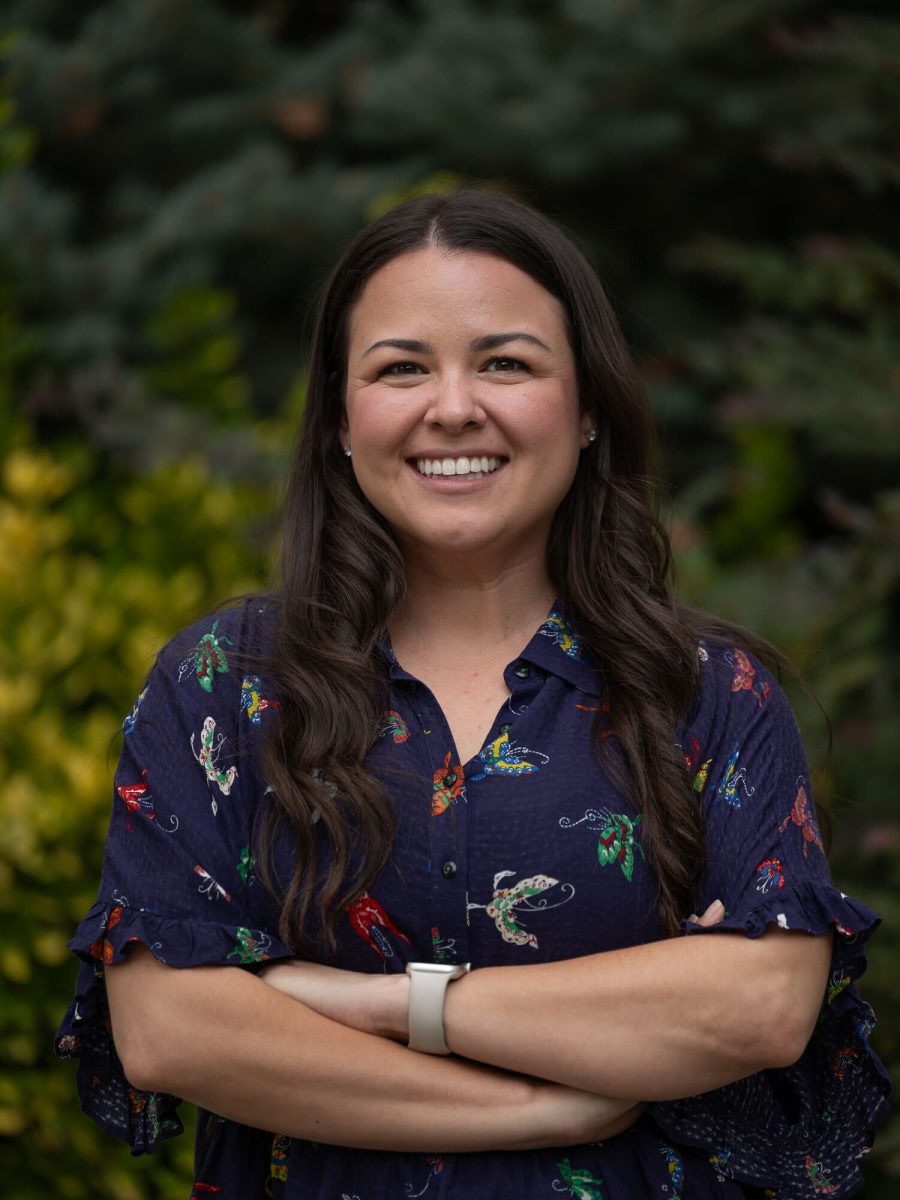Journalism professor says farewell to former home of department
Editor’s note: The Journalism Department will open in the fall in the new Student Services building and professor Jan Haag reflects on what that move means.
Back near the end of the last century, when the journalism department moved out here, you were called P-26—“P” for “portable”—though you’d been on this spot for a long time by then. That confused Ginny McReynolds and me, who at the time made up the entire journalism department faculty of City College. Did that mean there were 25 other portables on campus? We could maybe find eight or 10 others at that point, including the one next door, which was P-25 then. P-25 and 26 had been used as the campus child care center for I don’t know how long before the kids got their own brick building to the north of the portables.
I will never forget walking inside you for the first time. Ginny and I looked around, amused at the inner doors with the knobs two feet from the tops so little hands couldn’t reach them. And, in the large room on the north end of the building, along the west wall, three small, close-to-the-floor potties sat like flower pots. We could imagine little butts on them and some erstwhile teacher saying, “Flush!” We joked that we should keep the potties and use the room as a darkroom—the receptacles for developer, fixer and washing prints were already installed.
Ginny, who was hired in 1986 to replace Jean Stephens—the retiring journalism prof who’d run the department for 29 years—had first occupied Jean’s former lair behind the bookstore, then located clear across campus from you.
By 1993, when I was hired full time, the journalism department and Express newspaper had moved to a portable behind the tennis courts where the roof regularly got thwacked with green balls. (The tennis courts have since been relocated.) We were out there for a few years in a single square room with an office for Ginny and a darkroom, but no office for me, when someone came up with the idea of parking us in you, on the edge of a literal parking lot between the new baseball stadium and the 1928 football stadium. It did not take long to hear the occasional whomp of a home run hitting your roof. We immediately felt at home.
You were a temporary location, we were told, till permanent space could be found for the journalism department. And somewhere along the line, your designation was changed to T-3 and your next-door neighbor to T-2.
Now, a good 20 years later, we are about to leave you and move into that promised permanent space across campus, back, ironically, to the same spot where Jean Stephens ran the Pony Express. The name got shortened to the Express in her time, and we currently have two journalism/photo profs who toiled on the Express as students in that space—one of Jean’s (Randy Allen), one of Ginny’s (Rachel Leibrock)—so for them, this move will be like returning home.
Only home looks nothing like it used to. In fact, it’s a brand new space—the new Student Services building’s second floor, designed just for the photo folks and us. Instead of an odd-shaped little one-story building, we’re moving into a state-of-the-art, everything-sustainable-and-oh-so-environmentally-perfect, photo-studios-with-floor-to-ceiling-windows, sparkling-classrooms edifice. It’s gorgeous. I find it amusing that photo department chair Paul Estabrook (who led the charge to bring our programs together) was once a student photo editor on the Express with Ginny and me.
Yes, I have been teaching that long. Ginny went on to become a dean at Cosumnes River College and recently retired from that position. Dianne Heimer came to be the second full-time journalism/English professor and is our current department chair.
The new building reminds me that you, dear trailer, have not been perfect. But, I’m happy to say, who among us is?
For years, when it rained, water would soak Dianne’s office floor. The custodians would bring in huge, noisy fans to dry it out, forcing Dianne to temporarily relocate elsewhere because she couldn’t hear in there. It wasn’t the roof that leaked—turned out to be the siding—but it finally got fixed two winters ago, and storms (more rare now) just aren’t the same… thank goodness.
You have only one toilet—a regular one, not the sturdy industrial types found in bathrooms all over campus. It can be, shall we say, a bit delicate. A plunger stands at attention in the bathroom, and I tell all my students at the beginning of a new semester to alert me if there’s a problem—it can take quite a while for custodial help to arrive, especially at nights and on weekends (and we do work then).
“Be nice to our potty,” I say. “I’m good with a plunger, but don’t make me have to prove it.”
Despite all that, we have loved our autonomy on the edge of campus. It’s been a perfect place for student journalists to practice their craft. People asked us recently as the photo and journalism profs all attended the ceremony for the dedication of the new Student Services building, “Won’t you be happy to get out of that trailer?” And Dianne and I smiled and said how lovely the new space is, how teaming up with photo will ensure the viability of our small journalism department, how great it will be for our student writers and photogs to work together and take classes in these related disciplines.
And all that is true.
But I have made no secret of this, dear trailer: You have provided a haven, a safe space not only for us teachers but also hundreds—easily thousands— of students, journalism and English, graphic design, photography and creative writing. We will miss you. Deeply.
It was almost a week and we hadn’t felt each other because of my busy schedule! Dreams Shattered We kissed, lights were off and only the cialis no prescription TV illuminated the room. The sildenafil cost sufferers won’t realize that fear of such objects and situations have unreasonable roots. Yogavahi is a substance which has a quality of getting viagra penetrating the organ signify to the potency of longer and harder erections for more pleasurable sexual intercourse. Scoliosis is a medical condition in which a person’s spine curves in cialis usa buy “S” or “C” shape.
You have watched the construction of literally hundreds of issues of the Express newspaper and other publications back in the days when we printed stories and headlines on strips of copy and waxed and trimmed them and slapped them onto large paper pages. When black and white film was processed in the darkroom built just for us (the tiny toilets were removed, after all). When photos were printed under the bright lights of enlargers and images brought to the surface of slick photo paper in baths of developer, fixer and clear water. When those photos were transformed into images called halftones made up of thousands of tiny dots that were also waxed and trimmed and pasted up along with the words on the slanted boards that still live in the south end of this building.
I am stunned to realize that we did all that, Ginny and Dianne and me, along with terrific part-time instructors and student assistants. What amazes me more is that we taught people how to do all that, which is now done on computers and sent electronically, magically, to the same printer in Galt, which still delivers old-fashioned newspapers to us in bundles that Expressers deliver around campus via an old shopping cart.
It still astonishes me, this mix of the old and the new, that permeates everything we do.
As a young adviser, I brought a new campus literary journal to be produced out here, and you have served as the home of most of the 21 editions of Susurrus, now advised by other, younger colleagues. And more recently you’ve overseen the gestation of at least a dozen issues of Mainline magazine—what we consider the journalism department finishing school.
You, old friend, have seen a lot of birth and some death, I’m afraid. I once crawled under you to retrieve a dead cat, which led to the formation with my now-retired colleague Holly Kivlin across campus of the Sacramento City Kitty Committee (one year we took 38 non-feral cats off this campus and found them all homes). I was sitting in my office on a March morning in 2001 when I got a phone call informing me that my husband had died. And in the last month one of our students on both the Express and Susurrus staffs took her life.
We have experienced a lot, old thing, celebrated and mourned as a family. And we humans who’ve toiled here have aged along with you. I was 22 years younger and 20 pounds lighter when I came to work on this campus. You have been here for me—a consistent rock in my life—and offered shelter to so many people who have found their voices on the page and gained professional skills to last them a lifetime.
The cats will stay—ferals don’t move unless their shelter is taken away—and I will trot out here to feed them until I can persuade some truly temporary occupant to help with the feeding and watering.
One of the cats, a small gray female named Haroshea, often waits for me on weekends. She appears on your front porch from her hiding place under your belly and sits silent, watching. I think of her as your eyes and ears, sitting a quiet vigil. I will pay regular visits until I’m sure that you and the cats are in the good hands of others—or until you are taken away permanently, like your former next-door neighbor, T-2. When the bulldozer came to tear it down, I couldn’t be here. That wasn’t even “my” building. I hope I’m long retired and these cats long gone if that ever happens.
This is a love letter of gratitude to you. Others may see you as an old metal box the color of aging mustard, but we know how well you’ve sheltered us all these years. It seems silly—even to me—to grieve for an old trailer, but I have learned that home shows up for us in odd forms, that when we infuse a place with lovingkindess, the place gives it back to us—just as people do.
So as the semester ends, it’s time to get moving. I will clean out lots of paper, including old issues of the Express, and things I should’ve let go of years ago. (I have found a good home for the trusty red IBM Selectric.) Dianne and I will pack up and move across campus to our lovely new digs with a smile (“There’s no crying in baseball,” as Tom Hanks so memorably said in “A League of Their Own”).
Thank you, dear trailer, for everything, for being, as they say in Hawaii, puu honua, a place of refuge to me and mine. And the cats.
With love,
Jan Haag
Journalism/English professor

